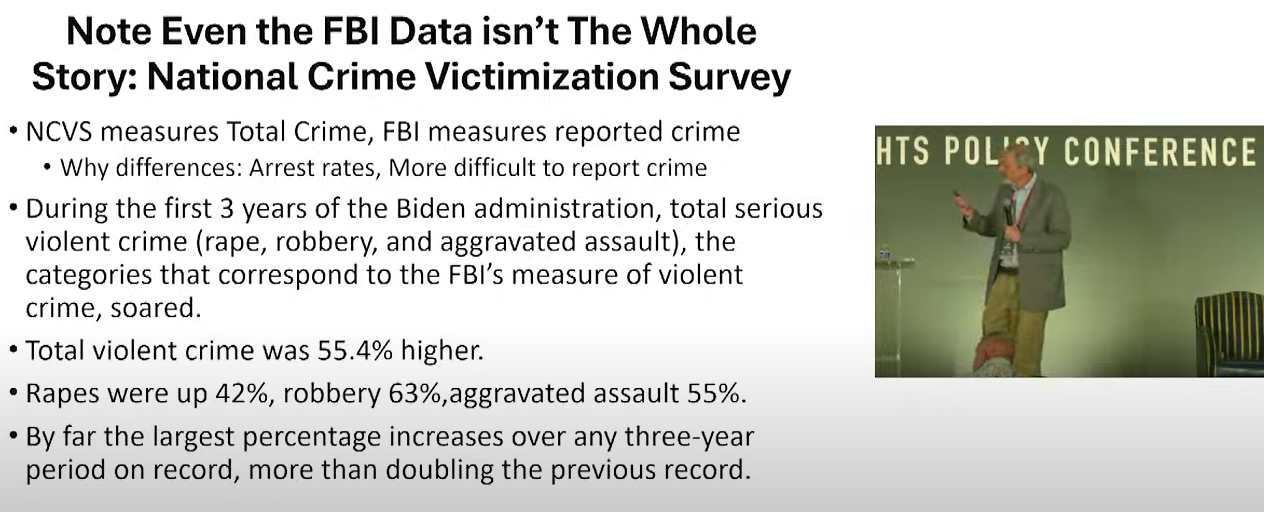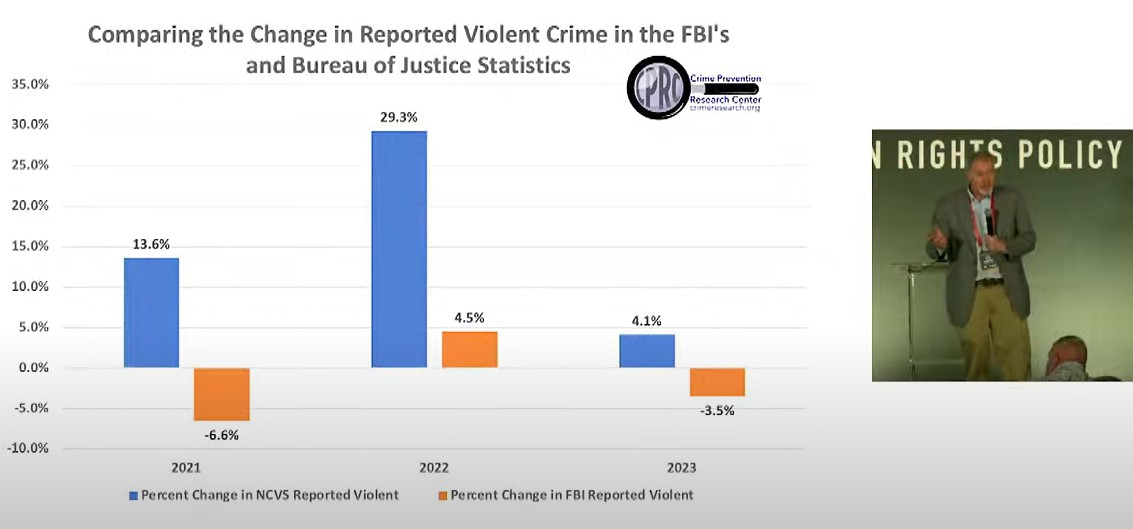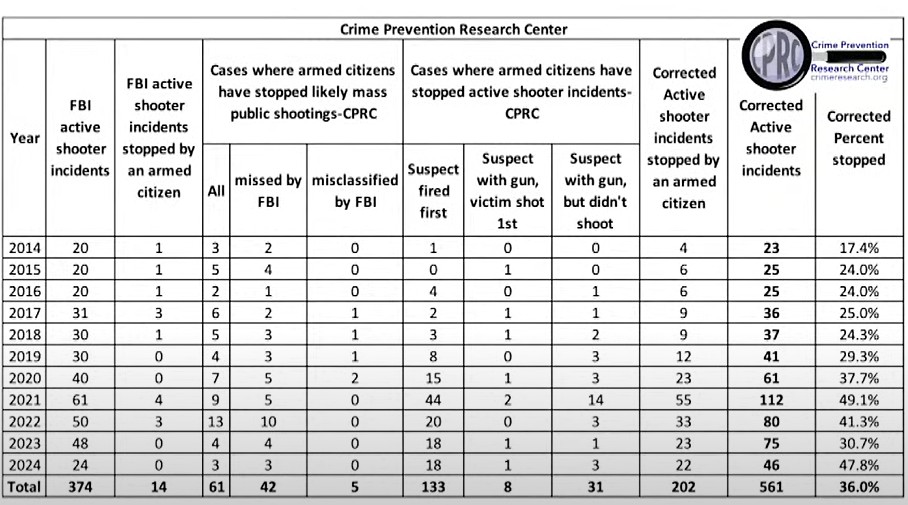
By Dave Workman
Gun research guru John Lott, whose data-filled talks on firearms and violent crime have captivated Gun Rights Policy Conference audiences for several years, made it clear to those gathered at this year’s event in Salt Lake City that he is not impressed with FBI data and how it was quietly updated last year, and he’s not keen on the establishment media, either.
He delivered a detail-packed presentation on FBI crime data which always has a one-year “lag” because statistics from the previous year are not published until well into September the following year. This became obvious during the presidential campaign of 2024 when then-candidate Donald Trump correctly stated during a debate that violent crime was up, and then found himself incorrectly corrected by a moderator using out-of-date data.
Lott explained how he found the agency had quietly updated and corrected its data for 2022 nearly one year after it was originally published. Initially, the data suggested crime for 2022 had declined 2.1 percent. But in the final report the following year, the FBI updated the data to show a 4.5 percent increase.
“So all of those headlines that they’d had over the previous year were wrong,” Lott observed.

Lott also noted that when the media did question the FBI’s update, the agency “refused to explicitly” acknowledge the data had been updated.
“Because then it would have been newsworthy,” he said, “and I actually believe they wanted to help the Democrats there.”
Lott did his presentation with a series of slides and illustrations, one of which showed how crime went up dramatically during the first three years of the Biden administration.
“We had the largest total percentage increase in violent crime over any three year period of time since they started collecting this data over 50 years ago,” he said.
Lott worked for the Justice Department during the first Trump administration as a senior advisor on statistics, which afforded him the opportunity to look at active shooter cases. He suspects that about 36 percent of all active shooting cases over a 10-year period from 2014 to 2024 were stopped by armed private citizens.
After talking about data problems, Lott turned his attention to how the media covers crime, especially violent crime, and they do it poorly, he intimated.
His “biggest pet peeve with regards to the media,” Lott explained, is that news agencies do not report the contents of diaries and manifestos recovered by investigators. There are many entries in these documents which reveal how shooters pick soft targets where they believe they will encounter no resistance, such as gun-free zones, schools and other places where firearms are prohibited.
Mass killers are, he suggested, convinced they will get more headlines if they kill more people.
“The media refuses to cover these statements,” he said.

“My guess is that the whole gun control debate we’re having now would be dramatically different if even once in a while the media would have said, ‘And by the way, this person explained why he picked the target that he did,’” Lott said.
Instead, politicians push to have background checks on private gun sales as a means of preventing mass shootings.
“There’s not one mass shooting this century that would have been stopped had such a law been in effect and perfectly enforced,” he maintained.
Lott, who founded and heads the Crime Prevention Research Center, said there are about 21.5 million concealed carry permit holders in the United States, and thanks to “Constitutional carry” laws now in effect in 29 states, approximately 15 percent of all adult civilians are armed some or all of the time. This puts would-be mass shooters and other criminals at a disadvantage, because they have no idea who may be armed in an area where they plan to commit a crime.
This is better than having a uniformed officer present in some places where that individual may be the first target. Lott indicated that school resource officers work in plain clothes rather than uniform as well, disguised perhaps as a physical education coach or some other teaching or staff role.
In closing, he also offered one suggestion: Use the data that his group produces.
“It doesn’t do us any good to put this data together unless you guys use it,” he said.